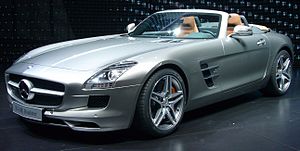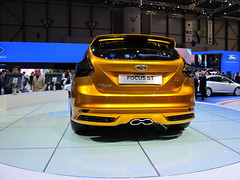Replacing
Fuel Pump
WARNING: Gasoline is very flammable. don't smoke when performing on the
fuel system, and keep any sparks or alternative sources of ignition faraway from the vehicle and fuel tank. don't use an incandescent bother light-weight close to the fuel tank because the hot surface of the sunshine bulb will ignite any fuel that may spill or splash on it. Fuel vapors are heavier than air and might additionally travel an extended distance along a garage floor. The fumes will be ignited by a heater, pilot light-weight, electrical motor or alternative supply of ignition far away. even be attentive to the very fact that static discharges also can ignite fuel. Proceed with caution.
The electric fuel tank on most vehicles with electronic fuel injection is found within the fuel tank. If there's no access panel below the rear seat or within the trunk of the vehicle, it means that you may ought to lower the fuel tank from the vehicle to switch the
fuel pump. this will be a troublesome job, thus you will need to require your vehicle to a service facility for repairs instead of attempting to try and do it yourself.
Before you move to all the work of removing the fuel tank, double-check below the rear seat and within the floor of the trunk for an access panel to the fuel tank. If the vehicle has one, you'll be able to amendment the
fuel pump while not dropping the tank. simply skip future few steps and undo the plate the holds the
fuel pump within the tank.
Before unbolting the straps that secure the fuel tank in place, take away the maximum amount fuel as potential from the tank. this can lighten the tank significantly and build it abundant easier to handle, lower and raise back to place. Some gas tanks have a drain plug within the bottom, however most don't thus might} ought to use a hand siphon pump to empty the tank (do NOT use an electrical drill powered pump because the sparks may ignite the fuel!). Insert the water the filler neck and use the hand
pump to start out the siphon action. don't suck on the hose to start out a siphon as a result of gasoline is toxic and therefore the fumes will damage your lungs. Drain the fuel into an approved container (a metal or plastic gas will, NEVER an open bucket), and seal the container once all the fuel has been drained from the tank. don't leave open containers of gasoline sitting around.
Make sure the parking brake is about, the transmission or transaxle is in park, and therefore the front wheels are chocked with blocks or bricks that the vehicle cannot roll after you raise it. The vehicle ought to even be parked on a level surface.
Raise the rear of the vehicle as required with a jack, and support the vehicle with a minimum of 2 jack stands (make positive the stands have the correct weight rating to handle the burden of the vehicle). NEVER crawl below a vehicle that's solely supported by a jack.
Disconnect the filler neck from the fuel tank by loosening or removing the clamp that holds the hose on the tank.
Remove either the front 2 bolts or the rear 2 bolts that secure the fuel tank straps to the vehicle. Then gently lower one finish of the tank. this can enable you to achieve the wiring connections, fuel line and vent hoses on prime of the tank. Disconnect the wires and hoses before removing the 2 remaining bolts that hold the opposite finish of the straps. The tank will currently be lowered from the vehicle.
remove
fuel pump from tank
Once the tank is sitting on the bottom, you'll be able to undo the plate on the highest of the tank the holds the
fuel pump in place. The plate might have a metal ring that has got to be rotated counterclockwise to get rid of the ring. Or, the plate is also held in place with screws or bolts. Once this plate has been loosened, the plate,
fuel pump and sending unit will be fastidiously pulled out of the tank.
Pump and Tank Inspection
Clues on why the pump failed is also found by examining the filter screen on the pump inlet, and peering into the tank itself. If the filter screen is clogged with dirt or rust, the fuel tank can in all probability ought to be cleaned or replaced. Dirt will be removed by steam cleaning or pressure cleaning the within of the tank and permitting it to dry. If the fuel that was drained from the tank is dirty, it ought to be disposed of or run through a low filter before it's reused. If the tank is steel and it's rusty within, you must replace it with a brand new one. The gas tank ought to even be replaced if it's leaking.
new fuel tank
When you install the pump within the tank, place a brand new filter screen on the pump (a new screen typically comes with the pump). a brand new gasket or seal ought to even be put in on the highest plate to stop leaks. If the fuel line or vent hoses are recent and cracked, they must get replaced additionally.
fuel pump inlet filter
Raise the tank high enough that the
fuel pump wires, fuel line and vent hoses will be reconnected, then end raising it and install the support straps to carry the tank in place.
Reconnect the fuel filler tube, then add fuel to the tank and check for leaks. The tank ought to be a minimum of 1/4 full to supply enough fuel for correct fuel pump lubrication and cooling.
Replacing the
fuel filter at now is additionally suggested.


































